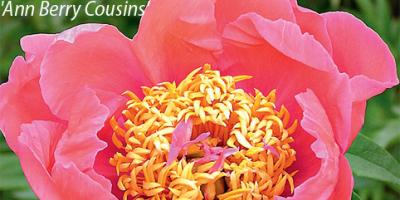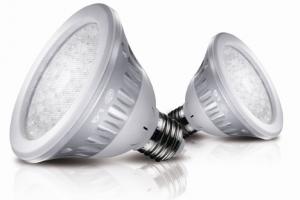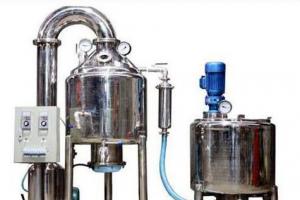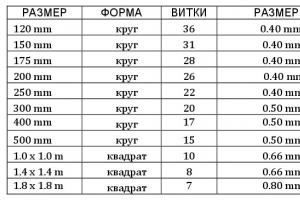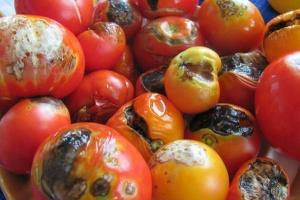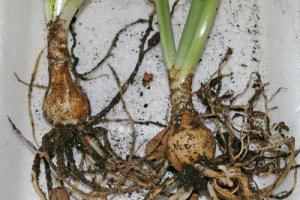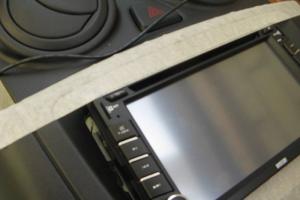In contact with
Classmates
Mycosis in children is an infectious disease caused by pathogenic or conditionally pathogenic organisms.
Pathogenic organisms contribute to the manifestation of symptoms in a child’s weakened immune system. And the weaker it is, the brighter the manifestation of a fungal infection will be.
They affect the skin, scalp and nails. They can also develop on mucous membranes - throat, tonsils, nasopharynx. Therefore, it is important to diagnose and begin treatment of the child in a timely manner.
Conditionally pathogenic ones do not manifest themselves in any way and do not pose a danger.
Classification of mycoses
Fungal infections affect children very often due to their immature immunity. There are about 30 types that can develop in children. It develops on and, and can also affect the integument, because the structure of the skin in children is not yet so dense. Fungal spores enter the subcutaneous layer and epithelium.
Fungal infections are divided into 4 groups according to the location of the lesion:
- Systemic - this group of mycoses affects internal organs as well as tissues. These include histoplasmosis, blastomycosis, coccidioidosis, cryptococcosis.
- Subcutaneous - this group of mycoses affects the skin, subcutaneous tissue, bones and fascia. These include chromomycosis, maduromycosis, sporotrichosis.
- Epidermycosis - this group affects the epidermis, hair and nails.
- Superficial - this group of mycoses affects the superficial stratum corneum of the epidermis and hair. These include multicolored and black lichen, keratomycosis, trichosporosis, piedraiasis.
There is also a classification based on the depth of the lesion:
- dermatomycosis, affects hair, nails and hair;
- deep mycosis, affects the skin and organs;
- keratomycosis (lichen);
- candidiasis (mucous membranes, in girls – vagina).
Photos of mycosis in children (on and between the fingers, on the feet and skin)






Causes of fungal infections in children
Fungal diseases affect children's bodies for several main reasons, which include:
Fungal infections can affect a child’s body at any age, be it 1-2 years or older. There are known cases of newborn babies with manifestations of mycoses.
The source of infection is under the nails, in the hair, on the scalp, in the armpits and groin folds.
The main causes of fungus in children are:
- improper or insufficient hygiene;
- exacerbation of congenital diseases;
- excess of sweets and salty foods in the diet;
- taking medications for a long time;
- prematurity;
- contact with carriers of harmful fungi (animals);
- poor environmental conditions in the region of residence.
Features of fungal infections in children
 Infection with the fungus occurs through soil, water, objects and surfaces, sick animals and people.
Infection with the fungus occurs through soil, water, objects and surfaces, sick animals and people.
In children's groups and institutions through toys and personal hygiene and household items.
In schoolchildren, infection is possible when visiting locker rooms, swimming pools, as well as during contact sports through exposed skin.
Children suffer from fungal infections just like adults. However, there are diseases that they suffer from more often (microsporia) and less often (athlete's foot or pityriasis versicolor).
Candidiasis in children is often accompanied by concomitant dysbiosis, which aggravates the treatment situation and delays the recovery period.
When diagnosing microsporia and trichophytosis, in one child it is necessary to check all children in contact with him, as well as animals.
Athlete's foot virtually does not affect children, since they generally do not visit public places (baths, swimming pools) and do not exchange their own shoes.
When diagnosing lichen versicolor in a family, it is important to protect contact with the child to avoid transmission of infection.
Symptoms
There are main symptoms of any type of mycoses - redness of the skin, itching and burning. Fungal infections mainly affect the scalp, fingernails and toenails, as well as locally the skin.
To others Symptoms of fungal infection include: the following:
- lumpiness of the skin;
- skin cracks;
- change in skin color to gray;
- peeling and the appearance of scales;
- hair loss in a certain area;
- constant scratching of the affected area;
- blisters and blisters on the skin;
- dense crusts;
- damage to the mucous membranes with a white coating (tonsils, vagina);
- bleeding areas;
- change in nail color, peeling nails;
- erosions and ulcers on the skin.
Any of these symptoms is a reason to consult a doctor for advice.
Diagnosis of fungal diseases in children
 In children, the manifestation of many diseases gives the same picture, so sometimes an accurate diagnosis may not occur immediately.
In children, the manifestation of many diseases gives the same picture, so sometimes an accurate diagnosis may not occur immediately.
That is why all childhood illnesses should be monitored by specialists and under no circumstances should you delay a visit.
A dermatologist or mycologist conducts such diseases in several ways - external examination, scraping of scales from the affected area, microscopic examination.
Also, cultures are carried out to determine the content of a special environment and determine the sensitivity of the fungus and various antifungal drugs. In some cases, a series of tests with dyes and a special lamp are carried out.
During the process, the doctor can take photographs to obtain more accurate data and make a diagnosis.
Treatment of fungal diseases in children
There are no special children's medications for the treatment of mycoses, so treatment should be carried out strictly under the supervision of a specialist. The dose and duration of use of any drug should be determined only by a doctor.
Before starting treatment, it is necessary to conduct an allergy test to determine the effect of a particular drug on a specific small patient.
During the treatment period, the doctor may prescribe antifungal drugs, antibiotics with antifungal effects, and other drugs that help to achieve positive dynamics more quickly.
Drug forms may also differ depending on the patient's age. Syrups, ointments, tablets, and drops are used in children's practice.

Concomitant diseases can be treated with antibacterial and anti-inflammatory, antipruritic drugs and antihistamines. In rare cases, hormone-containing medications are prescribed.
Among the drugs that cope well with the manifestations of the fungus, various ointments with nystatin, miconazolm or amphotericin A have proven themselves well. For fungus on the scalp, lesions can be cauterized with a solution of 2% iodine.
 Fluconazole-based drugs treat manifestations of mold and yeast-like fungi.
Fluconazole-based drugs treat manifestations of mold and yeast-like fungi.
The drug is approved in pediatric practice for children from 0 to 7 years and older.
For infants, the dose is up to 12 mg per 1 kg of weight, for schoolchildren up to 400 mg per day.
Products based on griseofulvin are used in children over 2 years of age and used in the treatment of smooth skin mycoses and candidiasis.
After 2 years, medications based on ketoconazole can also be used. They are used externally in the form of an ointment locally on the affected areas for up to 3 weeks.
To increase the effectiveness of treatment, drugs can be used in different forms simultaneously.
Traditional treatment
Along with drug treatment, doctors prescribe and in the form of baths and lotions.
- Brew strong natural coffee in a container, and then put your feet or hands in the bath. Repeat daily for at least 5 days at night.
- If children's nails are affected by fungus, they are wiped with a raw onion or wrapped as a compress. It is better to use at night.
- Garlic juice, ethyl alcohol and filtered boiled water are mixed in equal proportions and applied to the nail plates after bathing the child until the fungus completely disappears.
- Mix the garlic, crushed to a mushy state, with butter 1:1 and apply under gauze to the affected nails overnight.
- Add 5 g of salt and one clove of garlic to 1 liter of water. Let it brew for half an hour, strain. Soak clean gauze in this solution and apply to areas of inflammation.
- Fix freshly cut Kalanchoe leaves overnight on the affected areas.
- Lubricate the child’s nails or celandine essential oil as often as the child’s routine allows.
- Mix chamomile, oak bark and calendula in equal proportions, add water and boil. Let the broth brew for 15 minutes, strain. Add 1 teaspoon of sea salt to 200 ml of prepared broth. Immerse the baby's feet in the prepared solution for 20 minutes. Always ensure that the water is comfortable for the child. After the bath, put on socks. It's best to do it before bed.
- Mix 15 grams of soda with water to a mushy state and apply to the child’s feet and skin between the toes. After 10 minutes, rinse, wipe dry, apply baby powder or cornstarch.
- Brew 300 grams of milkweed in 1 glass of hot water. Strain the finished broth and use it in the form of baths.
- Grind the rowan leaves. Transfer to gauze and tape to the affected areas overnight.
- An ointment is prepared using 1 raw egg in the shell, 100 grams of 70% vinegar and 200 grams of soft butter. Place all ingredients in a jar without stirring and refrigerate for a week. After 7 days, the ointment is mixed and applied to the affected areas.
- The leaves of plantain, yarrow, burdock and wormwood are mixed in equal proportions and added to the bath where the baby’s feet hover. The water temperature should be constantly the same.
- Cotton wool soaked in novocaine is applied to the sore spot.
- Brew 20 grams of celandine in 1 liter of boiling water, let the broth brew and use it in the form of baths or lotions.
- You can use lotions from a solution of honey and water, if the child is not allergic to it, in a concentration of 1:10.
- Brew one of the herbs (sage, St. John's wort, chamomile, oak bark) in an amount of 20 grams in a glass of boiling water. Let it brew for 15 minutes. Strain and add 1 glass of water. This solution is used both for baths and in the form of lotions.
- Pour 250 grams of dried calendula flowers with hot water, leave for half an hour and use as a lotion for 30 days.
- To eliminate itching, apply compresses from pharmaceutical salicylic ointment, which are applied to the skin under the film during the day for 7 days. Before going to bed, the compress must be removed.
- Add 200 grams of sea salt to 1 liter of water. Bring the solution to a boil, cool to a warm state and use in the form of baths.

Complications
For the child’s body, the release of toxins into the blood due to untimely treatment. Against this background, children are likely to experience an allergic reaction and other more dangerous developmental pathologies.
Mycoses in general reduce the protective function of the body. And in preschool children, immunity is still in the development stage, so concomitant diseases may appear, which complicate the main treatment and increase the recovery period.
Forecast and prevention of fungal diseases in children
Fungal diseases in children generally require long-term treatment with strict adherence to all doctor’s recommendations. Moreover, the prognosis is almost always favorable, with the exception of advanced forms of mycoses, which are difficult to treat and can recur in adulthood.
Any disease is easier to prevent than to treat, especially in young patients.
The main preventive measures are:
- observe the number of layers of clothing, prevent the baby from overheating and sweating;
- choose shoes only from high-quality natural breathable materials;
- maintain hygiene of skin, nails and hair;
- when visiting public places, treat your skin with an antifungal agent, wash your hands thoroughly and do not walk barefoot;
- Avoid direct contact of the newborn with strangers.
An interesting video about fungus in a child from the famous Doctor Uomarovsky:
Conclusion
Any type of mycosis is a complex disease in a child of any age. It is very important to diagnose the fungus in time and begin treatment. If a fungal infection is not treated, it will become chronic and will be quite difficult to cure.
In contact with
Cutaneous candidiasis is a lesion of the skin and mucous membrane by yeast-like fungi of the genus Candida. It is noteworthy that these microorganisms are present in the body of every person in small quantities and do not manifest themselves in any way. However, under the influence of certain factors they begin to multiply, which leads to the development of candidiasis. The latter has pronounced symptoms and causes extreme discomfort to the patient. There are two forms of candidal dermatitis: damage to smooth skin and natural folds. In children, cutaneous candidiasis is quite common.
Causes
A newborn can acquire opportunistic fungi while still in the womb or while passing through the birth canal. This is possible if a pregnant woman had thrush and did not cure the disease in a timely manner.
During the postnatal period, the baby can also become infected from the mother (especially if she has a fungal infection of the breast). Absolutely all people are carriers of Candida; with any contact they can transmit their fungi to a newborn. And under certain conditions, the pathological process of development of infant candidiasis begins.
The physiological characteristics of infants also contribute to the development of acquired skin candidiasis:
- A very thin layer of epidermis and dermis,
- A small number of layers of protective cells on the skin,
- Looseness of mucous membranes,
- Low level of bactericidal activity,
- High pH value of the skin.
A baby can also get skin thrush when treated with antibiotic and antibacterial drugs.
The development of infection is also caused by the dirty hands of parents and clinic staff.
In newborns, a type of candidiasis called diaper dermatitis is also isolated. It develops in the groin area, on the buttocks and folds of the legs for the following reasons:
- Constantly wearing diapers
- Rare diaper changes
- Strong swaddling of the baby,
- Using airtight diapers
- Constant moisture of baby skin.
Symptoms
With cutaneous candidiasis, the skin is primarily affected. The location of thrush can be anywhere. Most often, candidiasis begins on the butt, genitals, legs, lips and skin around the mouth.
Parents may see a rash appear on the baby's body. The elements may come in different shapes, but they will all be red. The periphery of the affected area will be covered with microscopic bubbles.
Very often, cutaneous candidiasis is accompanied by oral thrush in infants. In this case, a whitish coating will appear on the lips, tongue and inside of the cheeks.
An increase in temperature and other symptoms of infection appear as the disease develops and large areas of the skin, mucous membranes of the nasopharynx and intestines are affected.
A candidiasis rash causes significant discomfort to the baby; for this reason, accompanying symptoms are added to the main signs of the disease:
- moodiness,
- loss of appetite,
- breast refusal,
- bad dream,
- regurgitation.
Diagnosis of skin candidiasis in a newborn
A doctor can use a visual examination to determine the presence of an infection. However, to understand the etiology of the disease and identify possible underlying and concomitant diseases, additional diagnostics will be required:
- scraping from the affected area of skin,
- general blood and urine analysis,
- tests for the presence of antibodies.
Complications
With timely detection of the disease and its treatment, the prognosis for skin candidiasis in a newborn is favorable.
However, advanced candidiasis can cause a number of serious complications:
- progression of the disease into an intractable chronic form,
- weakening of the immune system,
- respiratory tract damage
- damage to the digestive organs,
- infection with other viral diseases.
Treatment
What can you do
Young parents should never self-medicate. Traditional medicine can only worsen the baby’s condition. When the first signs of candidiasis appear, you should contact your pediatrician. Only he can make an accurate diagnosis and determine a treatment regimen.
Treatment takes place at home, so parents must strictly follow all medical recommendations. In case of unclear questions, consult a specialist.
If there is an infection in the baby, parents should take tests to identify this disease in themselves and treat it if necessary.
Treatment with medications should be accompanied by the following measures:
- regular hygiene of the baby’s oral cavity and entire body,
- refusal to breastfeed until the mother is completely cured,
- taking air baths,
- frequent diaper changes,
- refusal to constantly swaddle the baby.
What does a doctor do
It is important for the doctor to identify the etiology of the disease. The development of a treatment regimen will depend on the presence of an underlying disease and the severity of the infection.
Most often, cutaneous candidiasis is treated with local preparations - gels, ointments and creams containing antimycotics.
In more severe cases, oral antifungal medications containing antibiotics are prescribed.
If this treatment does not show effectiveness, then intravenous injection is prescribed until the manifestations of infection completely disappear.
The pediatrician should also refer parents and other close relatives of the newborn for examination to identify (and, if necessary, treat) infection in their body.
Prevention
Prevention of cutaneous candidiasis in a newborn primarily depends on the health of the young mother.
The expectant mother should start taking care of her planned baby in advance. Before conception, all existing infections should be identified and treated; during pregnancy and after, carefully monitor your health. It is also important to strengthen children's immunity and limit the impact of negative factors on the newborn's skin.
- feed the baby with breast milk (if the mother does not have an infection),
- regularly carry out a thorough toileting of the baby, stop constantly wearing diapers,
- take air baths regularly,
- go out into the fresh air for walks every day,
- maintain an optimal microclimate in an apartment or children's room (temperature about 18C, humidity about 50%),
- minimize contact with relatives who have obvious signs of thrush.
– a heterogeneous group of skin lesions, the causative agents of which are pathogenic microscopic fungi. Fungal skin diseases in children can manifest as peeling, itching, and cracked skin; thinning and hair loss, nail damage. Diagnosis of fungal skin diseases in children includes examination, fluorescent examination, microscopy and culture of scrapings for microflora. Complex treatment of fungal skin diseases in children is carried out using external and systemic antifungal agents, desensitizing and corticosteroid drugs, immunostimulants, and physiotherapy.

General information

Classification of fungal skin diseases in children
According to the depth of the lesion, fungal skin diseases in children are divided into keratomycosis (lichen versicolor), dermatophytosis (microsporia, trichophytosis, favus, epidermophytosis, rubromycosis); candidiasis; deep mycoses.
Keratomycosis is characterized by damage to the stratum corneum of the epidermis without the development of inflammatory reactions, damage to hair and nails. Dermatophytosis is accompanied by mild or severe inflammatory changes in the skin within the epidermis, damage to hair and nails. Dermatophytes (molds of the genera Trichophyton, Microsporum, Epidermophyton) are the main causative agents of fungal skin diseases in children. Superficial candidiasis, the second most frequently detected fungal skin disease in children, is caused by the pathogenic effects of yeast-like fungi of the genus Candida (usually C. albicans), affecting the skin and mucous membranes.
Causes of fungal skin diseases in children
The predominance of dermatomycosis among all fungal diseases is due to constant close contact of the skin with the environment. The causative agents of fungal skin diseases in children are widespread in nature, have great diversity and are highly resistant to external factors. Fungal skin diseases in children are usually observed in the form of sporadic cases; epidemic outbreaks are more typical for dermatophytosis of the scalp.
The source of anthropophilic dermatomycosis (trichophytia) is a sick person, zoophilic (microsporia) is a sick animal (stray cats and dogs, cows, horses), rare geophilic ones are soil. Infection occurs through direct contact of a child with the skin and hair of a patient or through household items contaminated with fungi and their spores (towels, washcloths, combs, toys, hats, shoes). Most often, children become infected with fungal skin diseases in swimming pools, showers and baths, on beaches, in hairdressers, and organized children's groups.
The characteristics of children's skin (hydrophilicity, increased vascularity, reduced bactericidal activity of sweat and sebaceous glands, easy vulnerability), immaturity of the immune system facilitate the penetration of the pathogen into the epidermis, contributing to the rapid development of fungal diseases in children.
A decrease in the child’s body’s defenses can be caused by poor ecology, stress, vitamin deficiency, long-term use of antibiotics, dysbacteriosis, endocrinopathies and chronic infections. In case of immunodeficiency, opportunistic fungi that normally live on the skin of a child can transform into a pathogenic form and cause a fungal disease (for example, Malassezia furfur - the causative agent of pityriasis versicolor).
Symptoms of fungal skin diseases in children
The nature and severity of symptoms of fungal skin diseases in children depend on the type and virulence of the pathogen, the location and area of the lesion, and the reactivity of the body. Of the fungal skin diseases in children, the most common and contagious are microsporia and trichophytosis (ringworm), which predominantly affect smooth skin and the scalp.
Microsporia in most cases (99%) is caused by the zooanthropophilic fungus Microsporum canis, rarely by the anthropophilic M.ferrugeneum. It usually occurs in children of preschool and primary school age; occurs with the formation of a few, round, clearly defined lesions with hair broken off at a height of 4-5 mm from the skin level. Within the lesion, the skin is covered with small grayish-white scales. On smooth skin, microsporia manifests itself as concentric erythematous-squamous plaques surrounded by a ridge of small vesicles and serous crusts.
In young children, superficial trichophytosis of the scalp is more often observed, caused by anthropophilic trichophytons (Trichophyton tonsurans and T. violaceum), accompanied by loss of color, elasticity and shine of hair, breaking off at the skin level (stumps in the form of black dots), the formation of clear, rounded bald spots covered with small flaky elements. Clinical signs of trichophytosis on smooth skin resemble manifestations of microsporia. The infiltrative-suppurative form is characterized by perifolliculitis and deep follicular abscesses.
When infected with the fungus Achorion schonleini, a rare fungal skin disease develops in children - favus (scab), which usually manifests itself on the scalp with the formation of scutulae (favus scutes) - dry thick crusts of yellowish or light brown color with raised edges and a depressed center, emitting a stagnant unpleasant smell. Hair affected by the fungus becomes thinner, becomes like tow, and is pulled out along with the roots. Favus can result in patchy or continuous scar atrophy of the skin and death of hair follicles.
Rubromycosis, caused by the anthropophilic pathogen T. rubrum, occurs in children aged 7-15 years; manifested by dry skin of the feet and hands, clear pink-red, finely flaky lesions with a scalloped edge; nail damage.
With athlete's foot, slight redness, peeling, moderate weeping, cracks and blisters, hyperkeratosis, accompanied by itching, are observed in the interdigital folds and on the soles of the feet.
Microscopy of clinical material (hair, epidermal scales, horny masses from the nail bed) makes it possible to detect the presence of mycelium, hyphae or spores in it, confirm a fungal skin disease in children and determine its tissue form. Sowing scrapings on universal and selective media helps to isolate a pure culture of fungi and determine their drug sensitivity; bacterioscopy of culture smears and biochemical analysis - to carry out phenotypic, species and intraspecific identification of the pathogen.
Physiotherapy for fungal skin diseases in children includes medicinal electrophoresis, pulsed magnetic therapy, darsonvalization, DMV therapy.
Treatment of fungal skin diseases in children is long-term and continues until clinical manifestations resolve and control tests for fungi are negative.
Forecast and prevention of fungal skin diseases in children
Many fungal skin diseases in children have a persistent course and require long-term systematic treatment, but if the recommendations are strictly followed, they have a favorable prognosis. Untreated fungal skin diseases in children acquire a chronic, relapsing form and can continue into adulthood.
Prevention of the spread of fungal skin diseases in children includes quarantine measures in children's institutions; disinfection of premises, household items, clothing, shoes, manicure and hairdressing supplies; avoiding contact of the child with stray animals, following the rules of personal hygiene, proper skin care, normalizing immunity.
” №07/2013 19.08.14
Fungal diseases
- Keratomycosis – fungus affects the surface of the child’s skin and manifests itself in the form of tinea versicolor and flaky skin.
- Candidiasis– damage by yeast-like fungi of the genus Candida to the mucous membranes, internal organs and skin.
- Deep mycosis– severe damage to all skin and internal organs.
- Dermatomycosis– damage to the skin, nails, hair.
Another insidious pathogen fungal infections among children, standing apart in a row fungal infections, are fungi of the genus Candida (colloquially known as thrush), which are widespread in nature.
A small child can become infected candidiasis during childbirth, if his mother already has vulvovaginal candidiasis, and during breastfeeding, if the mother suffers from nipple thrush. The infection is also transmitted through the pacifier if, when it fell on the floor, instead of washing it, the mother licked it and in this way passed “her” mushrooms to the child.
After infection, small white grains resembling semolina porridge appear on the mucous membranes of the cheeks, palate and tongue, and then white films that look like curdled milk.
If your child has skin rashes accompanied by persistent diarrhea for several days, you can suspect he has intestinal dysbiosis caused by increased growth Candida mushrooms. As a rule, it exists together with antibiotic-resistant strains of Staphylococcus aureus, Klebsiella, Pseudomonas aeruginosa, Proteus, etc.
Fungal infections
All fungal infections usually accompanied by fairly striking symptoms that cannot be ignored.
Suspect the presence mycosis in a child, you may have the following signs: the appearance of cracks in the skin followed by peeling, itching and burning pain, dry skin in infected areas, the appearance of itchy red or gray spots on the scalp and wet reddish spots with small red protrusions, irritation in the folds between fingers, all kinds of diaper rash, itching and peeling of the skin on the feet, painful blisters (swellings) on the feet, obvious changes in the structure of the nails, their peeling or peeling, the appearance of spots or yellowness on them.
For ringworm characterized by damage to the ends of the hair, broken off at different lengths, and the appearance of pink spots on smooth skin.
If large, sharply limited scaly, rounded lesions with typical broken hair appear on the child’s head at a distance of 3–5 mm above the skin level, and the hair itself begins to be pulled out easily and painlessly, this is a typical illustration of a similar fungal disease, which is also transmitted through contact with sick animals or household items - microsporia.
If you don't start treatment mycoses immediately, the mushrooms will penetrate deeper into the body, and the child will develop secondary symptoms of the disease - malaise, sleep disturbance, lethargy. And it will be much more difficult to defeat an advanced disease.
Fungus treatment
Unfortunately, mushrooms quite tenacious: they are resistant to temperature influences, and continue to reproduce at temperatures from - 50°C to + 70°C. They are also not destroyed by unfavorable environmental factors and many medications.
Methods fungus treatment, as a rule, depend on many factors - the duration of the disease, the type of fungus, the degree of infection, the presence of allergies to medications, as well as chronic or concomitant diseases. Mostly mycosis in children it is treated as follows: infected participants are treated with a 2% iodine solution in the mornings for two weeks, and in the evenings with special antifungal ointments.
With a common form mycosis the doctor may prescribe a course of the drug taken orally; external treatment of the skin and scalp with a 4% boric acid solution is also used.
For preventive purposes, the patient’s clothing, underwear and bed linen are disinfected.
First measures for treatment thrush in a child– this is the creation of an alkaline environment. To do this, you need to regularly treat the oral mucosa: first with a 2% soda solution (half a teaspoon of baking soda per 100 ml of boiled water) 5 times a day, then with a 1–2% aqueous solution (not alcohol) of brilliant green 5–6 times a day. If the measures do not have a positive effect within three days, be sure to consult a doctor.
Treatment of intestinal dysbiosis you should start by reducing the number of mushrooms, and not by completely destroying them. Attempt to destroy Candida mushrooms will lead to their replacement by flora, which has an even more adverse effect on the patient’s body (molds, clostridia, bacteroides, etc.).
Then, with the help of drugs - phages - it is necessary to reduce the number of accompanying staphylococci or enterobacteria.
And only after this it is necessary to add eubiotics or probiotics. Please note that under no circumstances should they be drunk at the same time as using antifungal drugs– only then, otherwise the result will be negative!
Availability analysis mushrooms must be done again a month after the initial treatment. In the future, children should undergo preventive courses of therapy in the fall and spring for strengthening the immune system.
It is important to know
Remember that everything fungal infections very contagious. The most common route of transmission is within the family, through constant contact with a sick person, through shoes, towels, washcloths and other toiletries. You can also become infected with a fungal infection in a public bathhouse and toilet, in a swimming pool, in a gym, or on the beach.
The infection process is accelerated by the presence of microtraumas of the skin, as well as increased sweating or moisture in the skin. Frequent occurrence mycosis associated with decreased immunity, long-term use of antibiotics, as well as chronic diseases.
To prevent the occurrence mycosis in a child, he should also be protected from contact with animals that have areas of baldness on the forehead, temples, ears, or bald spots on the body, legs, and neck. Very often carriers of various mycoses becomes cattle, pigs, sheep, rodents, which are carriers of the so-called ringworm.
Expert opinion
In addition to atopic dermatitis, the real scourge of the modern child is all kinds of mycoses smooth skin, as well as lichen versicolor, which “blooms” in the sun, which is caused by factors such as suppressed immunity and excessive sweating.
Sweating can be caused by vegetative-vascular disorders, excessive wrapping, long-term use of antipyretics, or a number of chronic diseases.
Fungal diseases foot skin lesions often occur in children with excessive sweating and constant use of closed shoes, since the fungi that cause them, Hymophycetes, prefer a moist environment.
To avoid infection, carefully ensure that the baby is always wearing clean socks made from natural fabrics and ventilated, comfortable shoes. Do not allow your child to walk barefoot in public places and use other people's hygiene products, towels and shoes.
Also fungal diseases occur on the skin of the hands (this occurs less frequently than on the feet). Hand mycoses are dangerous because the fungus can penetrate deep into the skin, which will significantly complicate treatment. Children often experience candidiasis of the skin of the hands, which appears due to the fact that parents cut their nails incorrectly or do not watch the child, and he simply bites them.
You may be interested in articles
Fungal diseases (mycoses) in children are quite common. They are infectious in nature and are caused by pathogenic microorganisms (pathogenic fungi) that can infect the skin, nails and mucous membranes. In young children, the immune system is not fully formed, and the skin is so thin and delicate that it cannot resist infection. Often, a child’s body is weakened after previous illnesses, and it is during this period that he is more vulnerable than ever and is unable to resist the fungus. Let us dwell in more detail on the reasons that contribute to infection, talk about the types of mycoses in children and methods of treating fungal infections.
Based on the type of pathogen, fungal infections are divided into several main groups:
- Candidiasis (infection caused by fungi of the genus Candida)
- Trichophytosis (fungus affects the skin, mucous membranes, nails)
- Cryptococcosis (a fungal infection that invades internal organs)
- Aspergillosis (due to low immunity, the lungs are affected)
According to the location of mycoses, they can be superficial (the infection does not spread beyond the skin and mucous membranes), and systemic, when internal organs are infected with the fungus. In children, superficial fungal infections that occur against the background of reduced immunity are most often diagnosed.
Reasons for appearance
 The main factor contributing to the appearance of a fungal infection in a child is a weakened immune system. The body's defenses can be undermined by frequent colds, long-term treatment with antibiotics, hormones and other medications. Mycoses often accompany children with chronic diseases (diabetes mellitus, intestinal dysbiosis, blood diseases), pathologies of the endocrine and immune systems.
The main factor contributing to the appearance of a fungal infection in a child is a weakened immune system. The body's defenses can be undermined by frequent colds, long-term treatment with antibiotics, hormones and other medications. Mycoses often accompany children with chronic diseases (diabetes mellitus, intestinal dysbiosis, blood diseases), pathologies of the endocrine and immune systems.
Fungal infections are often caused by a deficiency of vitamins (group B, C, folic acid) or a poor, monotonous diet with an excess of carbohydrates, sweets, preservatives and a lack of protein and other beneficial nutrients.
Newborn children can become infected with candidal infection from a sick mother during childbirth or from medical personnel in the maternity hospital if the rules of sanitation and hygiene are not observed (for example, when using shared pacifiers, changing tables, oilcloths, etc.).
Older children can catch the infection from a cat or dog infected with microsporia. More often . It is enough for a child to pet the animal and play with it, and soon characteristic symptoms appear on the skin. This type of mycoses is most often diagnosed in children of preschool and primary school age.
Another type of microsporia is lichen versicolor, which a child can contract from a sick person when using common household items, clothing, and bedding. Fungi are very tenacious and can persist in the environment for a long time; they are resistant to temperature influences and can reproduce even at sub-zero temperatures.
 Foot fungus in children appears after contact with an infected surface or when wearing someone else's shoes. Children often run barefoot in the pool, bathhouse, gym, that is, in those places where ideal conditions are created for the preservation and reproduction of fungus, which loves a humid environment and crowds of people. At home or in kindergarten, a baby can wear someone else's slippers, and pathogenic microorganisms can easily penetrate the skin through microscopic cracks and abrasions on the soles of their feet. In some cases, mycoses of the feet occur as a result of wearing tight and uncomfortable shoes, in which the feet sweat and are injured.
Foot fungus in children appears after contact with an infected surface or when wearing someone else's shoes. Children often run barefoot in the pool, bathhouse, gym, that is, in those places where ideal conditions are created for the preservation and reproduction of fungus, which loves a humid environment and crowds of people. At home or in kindergarten, a baby can wear someone else's slippers, and pathogenic microorganisms can easily penetrate the skin through microscopic cracks and abrasions on the soles of their feet. In some cases, mycoses of the feet occur as a result of wearing tight and uncomfortable shoes, in which the feet sweat and are injured.
A child becomes infected with nail fungus from a sick person if someone in the family is sick with this form of mycosis or catches the infection in a group of children. Infection is possible in public places (swimming pool, shower, sauna). Nail mycosis can develop as a result of using other people's things (tights, socks) or shoes.
Symptoms of fungal infections
Symptoms of the disease depend on the type of fungus, location and severity of the lesion.

If ringworm appears on smooth skin, then at the initial stage it looks like a red, oval-shaped spot with clear boundaries. Its appearance is accompanied by severe itching, the child scratches such a maternal plaque, and rashes soon appear on other parts of the body. Over time, the spots become ring-shaped, the skin becomes dry and begins to peel. The inside of the spot turns pale, and small red nodules appear along the edges, resembling a corolla.

In order to understand how to treat fungus in children, it is necessary to accurately determine its type and, based on a thorough examination, select the optimal treatment methods.
Diagnostics
 Diagnosis of a fungal infection begins with a history, visual examination, and identification of characteristic symptoms. To clarify the diagnosis, scrapings of tissue from the site of the lesion are examined under a microscope or the plaque that appears on the mucous membranes during candidiasis is studied. To do this, a swab from the baby’s mouth is taken for examination. Additionally, they can use the PCR (polymerase chain reaction) method, which allows them to determine the genes of the pathogen, or they can use special nutrient media on which fungal cultures are grown.
Diagnosis of a fungal infection begins with a history, visual examination, and identification of characteristic symptoms. To clarify the diagnosis, scrapings of tissue from the site of the lesion are examined under a microscope or the plaque that appears on the mucous membranes during candidiasis is studied. To do this, a swab from the baby’s mouth is taken for examination. Additionally, they can use the PCR (polymerase chain reaction) method, which allows them to determine the genes of the pathogen, or they can use special nutrient media on which fungal cultures are grown.
To diagnose severe systemic infections, ultrasound, computed tomography, x-ray or serological methods are used. Blood and stool tests may be prescribed as additional examination methods.
If you suspect that your child has been infected with a fungus, you should immediately contact your local pediatrician or pediatric dermatologist. The sooner treatment is started, the faster the disease can be dealt with. Depending on the clinical picture and severity of symptoms, the doctor will refer you to a hospital for treatment or prescribe a course of treatment at home. You cannot buy medications and do treatment on your own; this can seriously harm the child and provoke the development of severe complications.
Treatment methods
 How to treat fungus in children? You can cope with the infection only with the help of qualified specialists who will select the optimal treatment regimen, taking into account possible contraindications and the severity of symptoms. The main goal of therapeutic measures is to destroy the fungus in the body. For this purpose, the doctor will select systemic drugs (tablets, injections) or local agents (ointments, creams, solutions).
How to treat fungus in children? You can cope with the infection only with the help of qualified specialists who will select the optimal treatment regimen, taking into account possible contraindications and the severity of symptoms. The main goal of therapeutic measures is to destroy the fungus in the body. For this purpose, the doctor will select systemic drugs (tablets, injections) or local agents (ointments, creams, solutions).
In severe cases, when internal organs are damaged, detoxification therapy is carried out, aimed at cleansing the body of toxins and fungal waste products. The child will be prescribed intravenous infusion of saline solutions and sorbents. A very important point in therapy is the use of immunomodulators, which boost the immune system and prevent the spread and progression of fungal infection.
Mycoses of the skin and nails (onychomycosis) in a child are treated comprehensively, using local and systemic antifungal drugs. For treating affected skin, the most common pharmaceutical products are ointments, gels, creams, lotions, and sprays. Your doctor may prescribe the following medications:

- Lamisil
- Clotrimazole
- Miconazole
- Exoderil
All these products are intended for external use; they are applied to the affected skin and nails 2-3 times a day. On average, the course of treatment takes from 2 to 6 weeks. Doctors recommend completing the course of therapy completely and continuing treatment for some time after the visible symptoms of the fungus disappear. This will help prevent relapse of the disease.
Fungus-affected areas on the child’s feet, nails, and body should be treated daily with antiseptic solutions (potassium permanganate, boric acid, furatsilin). Particular care must be taken to treat the skin in the interdigital area and in the nail area. If necessary, when the infection becomes severe and protracted, the doctor may prescribe the child antifungal drugs in tablets (Griseofulvin, Terbinafine).
 Terbinafine for oral administration is prescribed to children from 2 years of age. The dosage regimen and dosage are selected by the attending physician in accordance with the age and body weight of the baby. Usually the drug is taken for 10 days, then a ten-day break is taken. The standard course of treatment is 4-8 weeks.
Terbinafine for oral administration is prescribed to children from 2 years of age. The dosage regimen and dosage are selected by the attending physician in accordance with the age and body weight of the baby. Usually the drug is taken for 10 days, then a ten-day break is taken. The standard course of treatment is 4-8 weeks.
To treat the skin of the feet and nails affected by fungus, the doctor may recommend the drug Amorolfine, which is produced in the form of a cream or nail polish. This medication suppresses and destroys pathogenic fungi, eliminates the unpleasant odor that appears with mycosis of the feet and nails. The active substance of the drug is not absorbed into the bloodstream and does not have a negative effect on the body.
The drug Diflucan has proven itself well in the fight against mycoses in children. This is one of the safest and most effective antifungal agents. Available in the form of solutions for intravenous administration, orange-flavored suspension and gelatin capsules.
Prescribe external treatment with ointments (Clotrimazole, Miconazole, ointments containing salicylic acid, tar, zinc, naftalan oil). Griseofulvin is used for oral administration. To eliminate severe itching, antihistamines (Suprastin, Loratadine, Cetrin, Zyrtec) are used. In severe cases, your doctor may prescribe corticosteroids, which are medications that contain steroid hormones. They quickly cope with unpleasant symptoms, but use them in short courses (5-7 days) due to many contraindications and side effects. In addition, the child is prescribed immunostimulants to strengthen the immune system, multivitamin complexes and various physical procedures (magnetic therapy, electrophoresis, darsonvalization).
 Treated with antifungal drugs in tablets (Clotrimazole). To eliminate white plaque in the oral cavity, the mucous membrane is treated with a soda solution (take 1/2 teaspoon of soda per 100 ml of water), or rinses with a solution containing nystatin are prescribed. For intestinal dysbiosis caused by a fungus, preparations containing live cultures of beneficial bacteria are recommended.
Treated with antifungal drugs in tablets (Clotrimazole). To eliminate white plaque in the oral cavity, the mucous membrane is treated with a soda solution (take 1/2 teaspoon of soda per 100 ml of water), or rinses with a solution containing nystatin are prescribed. For intestinal dysbiosis caused by a fungus, preparations containing live cultures of beneficial bacteria are recommended.
For skin candidiasis, complex treatment with antifungal drugs and corticosteroid creams is used to eliminate external manifestations. For thrush, ointments and vaginal suppositories (Monistat, Mycelex) are prescribed.
Traditional drug treatment can be combined with traditional medicine. There are many recipes that can be used at home, but before treating a child with “grandmother’s remedies,” you must obtain the advice and approval of your doctor.

Prevention of fungal infections
The following measures will help prevent the occurrence of mycoses in children:


